best lenses for Nikon D3300: Your interest in photography will be maintained by the D3300 camera’s amazing images when paired with the top-rated compatible lenses that are included in this review.
This DSLR, which costs about $450, is ideal for aspiring photographers. With a focal length of 18–55 mm on average, the D3300 will meet all of your shooting requirements.
The correct lens may make all the difference when it comes to using your Nikon D3300 to capture amazing moments. You probably own this amazing DSLR camera and are looking for the best lenses to improve your photography. You don’t need to search any more since we’ve put together a list of the best lenses for the Nikon D3300 that are on the market to make sure you get every detail.

Table of Contents
Top 7 Best Lenses for Nikon D3300
It is not the newest camera model available on the market now, the Nikon D3300. Even though it was introduced in January 2014, its reach and usefulness still astound and it complies with modern requirements.
Thus, this is a wise choice if you want to get a new lens for your Nikon D3300. The top lenses for the Nikon d3300 will be highlighted in this guide, allowing you to select your favorite!
1. Nikon AF-S DX NIKKOR 18-300mm f/3.5-6.3G ED VR Lens:
Our Choice
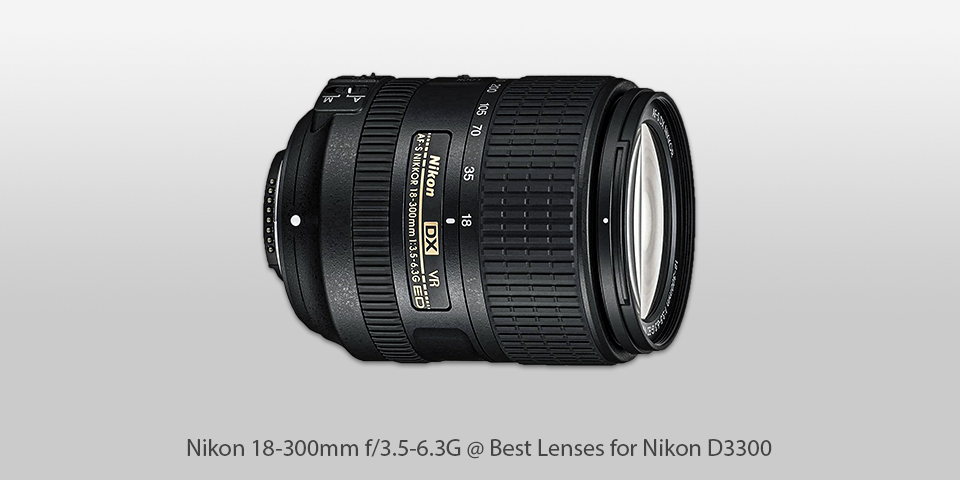
Specification
| Specification | Value |
|---|---|
| Focal Length | 18-300mm |
| Maximum Aperture | f/3.5-6.3 |
| Minimum Aperture | f/22-40 |
| Lens Construction | 16 elements in 12 groups (3 aspherical, 3 ED) |
| Diaphragm Blades | 7 (rounded) |
| Minimum Focus Distance | 1.6 feet (0.48 meters) at all zoom positions |
| Maximum Reproduction Ratio | 0.32x |
| VR (Vibration Reduction) | Yes |
| Autofocus | Yes, built-in AF motor |
| Filter Size | 67mm |
| Dimensions (Diameter x Length) | 78.5 x 99 mm |
| Weight | Approximately 550g (19.4 oz) |
| Mount Type | Nikon F-Bayonet |
| Compatibility | DX-format cameras (APS-C sensor) |
Nikon AF-S DX NIKKOR 18-300mm Pros and Cons
| Pros | Cons |
|---|---|
| Versatile Focal Range: 18-300mm | Variable Aperture: Aperture changes with zoom level |
| Vibration Reduction (VR): Helps with handheld shots in low light | Size and Weight: Can be bulky and heavy |
| Wide-Angle to Super-Telephoto Coverage: Suitable for various shooting scenarios | Image Quality Trade-offs: Some compromises due to the broad focal range |
| Convenient All-in-One Solution: Eliminates the need to frequently change lenses | Price: Higher cost compared to more specialized lenses |
| Aspherical and ED Elements: Helps reduce aberrations and distortions | Autofocus Speed: May not be as fast as prime lenses |
Keep in mind that the perceived pros and cons can vary depending on individual preferences, specific use cases, and personal shooting styles. Always consider your own photography needs and preferences when evaluating a lens.
This Nikon d3300 zoom lens has an aperture range of f/3.5 to f/22 and can capture an angle of up to 76 degrees. Its minimum focusing distance of 1.6 feet makes working with delicate things easier. Twelve categories comprise the 16 components that are integrated by the lens.
It is compatible with both FX-format and DX-format cameras. The focal length range of the lens is vast, ranging from wide-angle to telephoto. With all these features, it’s among the finest lenses for the Nikon d3300, producing excellent shots under all lighting conditions.
2. Tamron 18-200mm f/3.5-6.3 Di II VC Lens:
Water-resistant
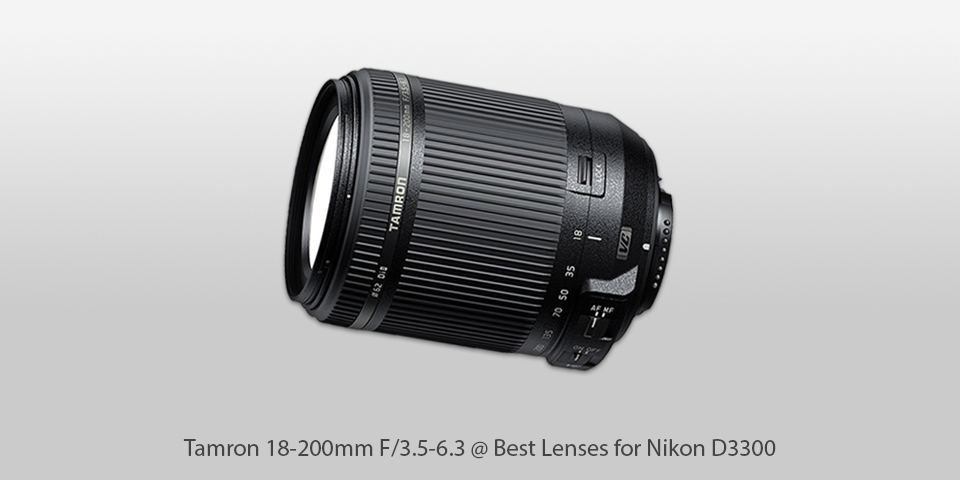
Specification
| Specification | Value |
|---|---|
| Focal Length | 18-200mm |
| Maximum Aperture | f/3.5-6.3 |
| Minimum Aperture | f/22-40 |
| Lens Construction | 16 elements in 14 groups (1 hybrid aspherical, 1 low dispersion) |
| Diaphragm Blades | 7 (rounded) |
| Minimum Focus Distance | 1.5 feet (0.45 meters) at all zoom positions |
| Maximum Magnification Ratio | 1:4 (at 200mm) |
| Vibration Compensation (VC) | Yes |
| Autofocus | Yes |
| Filter Size | 62mm |
| Dimensions (Diameter x Length) | 74.4 x 96.6 mm |
| Weight | Approximately 400g |
| Mount Type | Canon EF, Nikon F, Sony A (for APS-C cameras) |
| Compatibility | APS-C format cameras |
Tamron 18-200mm f/3.5-6.3 Di II VC Lens pro and cons
| Pros | Cons |
|---|---|
| Versatile Focal Range: 18-200mm | Variable Aperture: Aperture changes with zoom level |
| Vibration Compensation (VC): Reduces camera shake for better handheld shots | Image Quality Trade-offs: Due to the broad focal range, there may be some compromises in image quality |
| Compact and Lightweight: Convenient for travel and everyday use | Not Ideal for Low Light: Limited aperture may not perform well in low-light conditions |
| All-in-One Solution: Eliminates the need to carry multiple lenses | Autofocus Speed: May not be as fast as prime lenses or more expensive zooms |
| Affordability: Generally more budget-friendly compared to multiple specialized lenses | Build Quality: Some users may find the build materials less robust than premium lenses |
| Compatibility: Available for multiple camera mounts (Canon EF, Nikon F, Sony A for APS-C) | Not Suitable for Full Frame: Designed for APS-C format cameras |
Always consider your specific needs, shooting style, and budget when evaluating a lens. Individual preferences can vary, so what might be a drawback for one photographer could be acceptable for another based on their requirements.
Remember that subjective perceptions of benefits and drawbacks might differ based on personal preferences, use cases, and shooting techniques. When assessing a lens, never forget about your personal demands and preferences in photography.
3. Nikon AF-S NIKKOR 200-500mm f/5.6E ED VR Lens:
For portraits
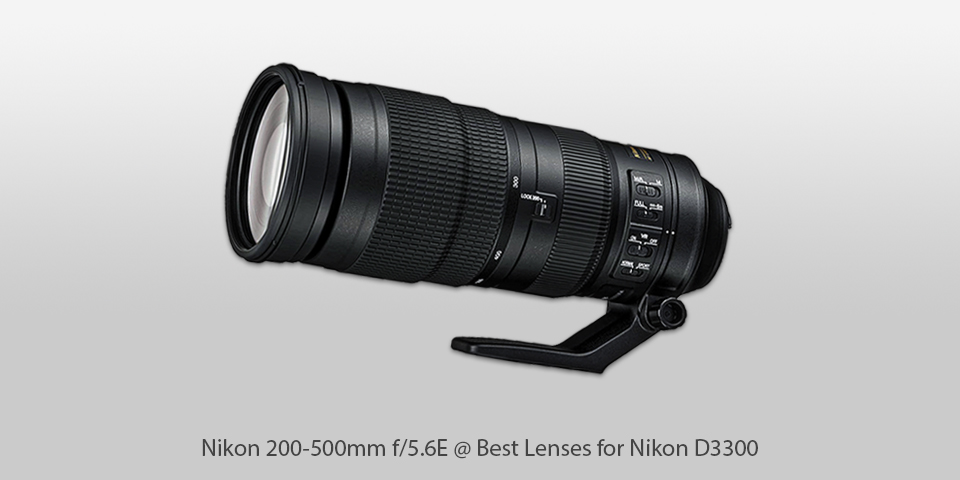
Specification
| Specification | Value |
|---|---|
| Focal Length | 200-500mm |
| Maximum Aperture | f/5.6 |
| Minimum Aperture | f/32 |
| Lens Construction | 19 elements in 12 groups (including 3 ED glass elements) |
| Diaphragm Blades | 9 (rounded) |
| Minimum Focus Distance | 7.2 feet (2.2 meters) at all zoom positions |
| Maximum Magnification Ratio | 0.22x |
| Vibration Reduction (VR) | Yes |
| Autofocus | Yes |
| Tripod Collar | Yes (detachable) |
| Filter Size | 95mm |
| Dimensions (Diameter x Length) | 108 x 267.5 mm |
| Weight | Approximately 2,300g (81.2 oz) |
| Mount Type | Nikon F-Bayonet |
| Compatibility | Full-frame and APS-C format cameras |
Nikon AF-S NIKKOR 200-500mm Pro and Cons
| Pros | Cons |
|---|---|
| Impressive Focal Range: 200-500mm | Weight: Considerably heavy at around 2.3kg (81.2 oz) |
| Constant Aperture: f/5.6 throughout the zoom range | Size: Large and may attract attention in public spaces |
| Vibration Reduction (VR): Effective in reducing camera shake | Price: Relatively high, especially for beginners or casual photographers |
| High-Quality Optics: Includes three ED glass elements for improved image quality | Fixed Aperture: Some might prefer a faster constant aperture for low-light conditions |
| Versatile for Wildlife and Sports Photography: Ideal for capturing distant subjects | No Weather Sealing: Not fully weather-sealed for challenging environmental conditions |
| Tripod Collar: Enhances stability during tripod use | No Built-in Teleconverter: Some similar lenses offer built-in teleconverters for additional reach |
| Compatible with Full-frame and APS-C Cameras: Versatility in camera compatibility | Autofocus Speed: May not be as fast as prime lenses or more expensive telephoto zooms |
With its crisp focus and strong zoom lens, the Nikon D3300 is an excellent choice for capturing animals, sports, performances, landmarks, and other far-off objects or subjects.
This lens’s silent Wave Motor AF mechanism allows for quick and fluid focusing, which is excellent for taking still images and filming movies. In addition, the adjustable focus ring allows you to adjust the focus for amazing outcomes.
4. Nikon 10-20mm f/4.5-5.6G
Budget

Specification
| Specification | Value |
|---|---|
| Focal Length | 10-20mm |
| Maximum Aperture | f/4.5-5.6 |
| Minimum Aperture | f/29-36 |
| Lens Construction | 14 elements in 11 groups (including 3 aspherical elements) |
| Diaphragm Blades | 7 (rounded) |
| Minimum Focus Distance | 0.22m (0.8 feet) from the focal plane at all zoom positions |
| Maximum Reproduction Ratio | 0.17x |
| Vibration Reduction (VR) | Yes |
| Autofocus | Yes |
| Focus Method | AF-P (Pulse Motor) |
| Filter Size | 72mm |
| Dimensions (Diameter x Length) | 77 x 73mm (3.0 x 2.8 inches) |
| Weight | Approximately 230g (8.1 oz) |
| Mount Type | Nikon F-Bayonet |
| Compatibility | DX-format cameras (APS-C sensor) |
Nikon 10-20mm f/4.5-5.6G Pro and Cons
| Pros | Cons |
|---|---|
| Ultra-Wide Perspective: 10-20mm focal range for expansive shots | Variable Aperture: Aperture changes with zoom level |
| Compact and Lightweight: Easy to carry and suitable for travel | Not Ideal for Low Light: Limited aperture may struggle in low-light conditions |
| Vibration Reduction (VR): Helps reduce camera shake for handheld shots | Plastic Mount: Build quality may not be as robust as metal mounts |
| Affordable: Generally more budget-friendly compared to higher-end wide-angle lenses | Manual Focus Ring: Lacks a traditional focus ring, which may be a preference for some users |
| Aspherical Elements: Helps minimize optical aberrations for improved image quality | Limited Zoom Range: Some ultra-wide lenses offer a wider focal range |
| Autofocus Performance: AF-P motor provides fast and quiet autofocus | Compatibility Issues: Some older camera models may not support AF-P lenses |
| Wide Filter Size: 72mm filter thread allows for creative filter usage |
For photographers who specialize in interiors, architecture, and landscapes, the Nikon d3300 wide angle lens is the ideal choice. The Nikon 10-20mm f/4.5-5.6G will also allow you to create great group photographs. This optical attachment is a flexible lens that produces remarkable results under all photography conditions.
This lens will work flawlessly whether you use it to capture landscapes or interiors of buildings. The Nikon 10-20mm f/4.5-5.6G’s pulse stepping motor autofocus mechanism ensures fast, silent, and fluid focusing, producing images of exceptional quality.
5. Nikon 300mm f/4E
Great image stabilization
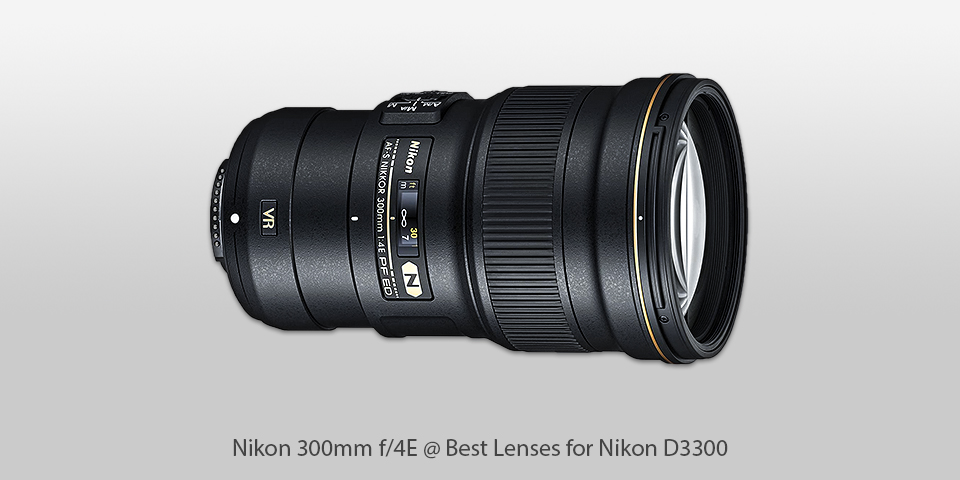
Specification
| Specification | Value |
|---|---|
| Focal Length | 300mm |
| Maximum Aperture | f/4 |
| Minimum Aperture | f/32 |
| Lens Construction | 16 elements in 10 groups (including one PF (Phase Fresnel) and one ED glass elements) |
| Diaphragm Blades | 9 (rounded) |
| Minimum Focus Distance | 1.4m (4.6 feet) |
| Maximum Reproduction Ratio | 0.24x |
| Vibration Reduction (VR) | Yes |
| Autofocus | Yes |
| Focus Method | Rear Focusing System with Ring-Type Ultrasonic Motor (AF-S) |
| Filter Size | 77mm |
| Dimensions (Diameter x Length) | 89 x 147.5mm (3.5 x 5.8 inches) |
| Weight | Approximately 755g (26.6 oz) |
| Mount Type | Nikon F-Bayonet |
| Compatibility | Full-frame and APS-C format cameras |
Nikon 300mm f/4E Pro and Cons
| Pros | Cons |
|---|---|
| Compact and Lightweight: Uses a Phase Fresnel element for a more compact design | Price: Can be relatively expensive, especially for enthusiasts |
| Excellent Image Quality: Utilizes ED glass elements for sharp and clear images | Fixed Aperture: f/4 is fixed, and some might prefer a wider aperture for low-light conditions |
| Vibration Reduction (VR): Effective for handheld shooting at slower shutter speeds | Limited Zoom Range: Fixed focal length at 300mm may not suit all shooting scenarios |
| Fast and Quiet Autofocus: AF-S motor provides quick and silent autofocus | Filter Size: Larger 77mm filter size may be costlier for filters |
| Great Build Quality: Robust construction with weather sealing for durability | No Focus Limit Switch: Lacks a focus limiter switch for restricting the focus range |
| Versatile Telephoto Lens: Suitable for wildlife, sports, and outdoor photography | No Included Tripod Collar: Tripod collar must be purchased separately |
| Phase Fresnel Technology: Minimizes chromatic aberration and controls size/weight |
Robust and ergonomic, the Nikon 300mm f/4E has strong long-reach lenses. Compared to conventional 300mm lenses, this prime telephoto lens is lighter and more compact because to its Phase Fresnel element.
With a length of 147,5 mm and a weight of 755 g, this optical device is the lightest 300mm full-frame autofocus lens available. Take crisp, clean pictures because the Phase Fresnel lens element efficiently corrects for undesired ghosting and chromatic distortion. Its collection of features demonstrates why it is among the greatest lenses for the Nikon D3300.
6. Nikon AF-P DX NIKKOR 70-300mm f/4.5-6.3G ED VR Lens:
Smooth AF
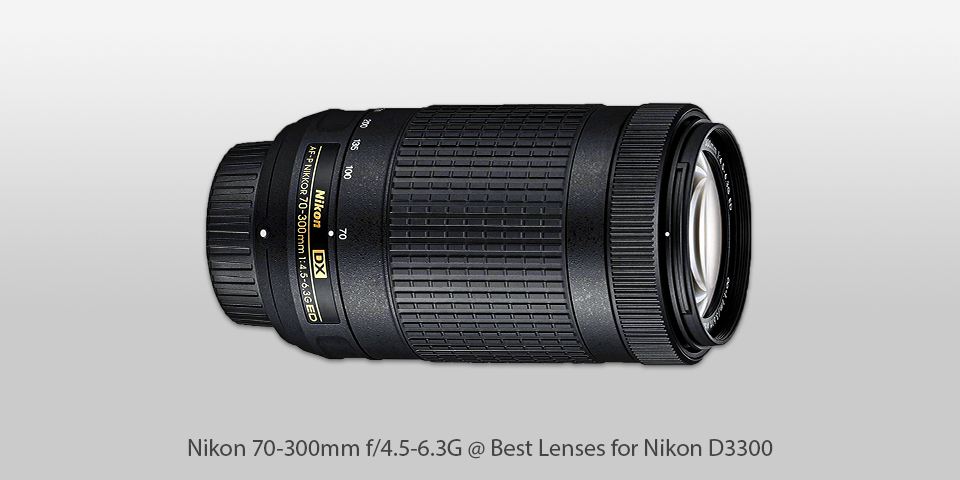
Specification
| Specification | Value |
|---|---|
| Focal Length | 70-300mm |
| Maximum Aperture | f/4.5-6.3 |
| Minimum Aperture | f/32-40 |
| Lens Construction | 14 elements in 10 groups (including one ED glass element) |
| Diaphragm Blades | 7 (rounded) |
| Minimum Focus Distance | 1.1m (3.7 feet) from the focal plane at all zoom positions |
| Maximum Reproduction Ratio | 0.22x |
| Vibration Reduction (VR) | Yes |
| Autofocus | Yes |
| Focus Method | AF-P (Pulse Motor) |
| Filter Size | 58mm |
| Dimensions (Diameter x Length) | 72 x 125mm (2.8 x 4.9 inches) |
| Weight | Approximately 415g (14.7 oz) |
| Mount Type | Nikon F-Bayonet |
| Compatibility | DX-format cameras (APS-C sensor) |
Nikon AF-P DX NIKKOR 70-300mm Pro and Cons
| Pros | Cons |
|---|---|
| Versatile Zoom Range: 70-300mm focal length for flexibility in framing | Variable Aperture: Aperture changes with zoom level |
| Lightweight and Compact: Easy to carry around for a telephoto lens | Plastic Mount: Build quality may not be as robust as metal mounts |
| Vibration Reduction (VR): Reduces camera shake for handheld shots | Not Ideal for Low Light: Limited aperture may struggle in low-light conditions |
| Fast and Quiet Autofocus: AF-P motor provides quick and silent autofocus | No Full-Time Manual Focus Override: Manual focus may not be as intuitive for some users |
| Affordable: Generally more budget-friendly compared to higher-end telephoto lenses | Limited Aperture Range: May not achieve a very shallow depth of field |
| Great for Travel: Compact design makes it suitable for travel and outdoor photography | Limited Low-Light Performance: Due to the variable aperture and limited aperture range |
| Compatible with DX-format Cameras: Specifically designed for APS-C sensor cameras | Plastic Build: May be less durable than more expensive lenses |
Being outfitted with a state-of-the-art focusing mechanism, this lens is among the finest for the Nikon D3300 and yields excellent images.
Despite its lightweight construction and small size, the lens offers a strong zoom that lets you take precise photos of far-off subjects. In those circumstances where the performance of your 18-55mm lens is unlikely to be optimal, it will be the ideal addition.
7. Nikon 16-80mm f/2.8-4E
Amazing image quality

specification
| Specification | Value |
|---|---|
| Focal Length | 16-80mm |
| Maximum Aperture | f/2.8-4 |
| Minimum Aperture | f/22-32 |
| Lens Construction | 17 elements in 13 groups (including 4 ED glass elements and 3 aspherical elements) |
| Diaphragm Blades | 7 (rounded) |
| Minimum Focus Distance | 0.35m (1.15 feet) at all zoom positions |
| Maximum Reproduction Ratio | 0.22x |
| Vibration Reduction (VR) | Yes |
| Autofocus | Yes |
| Focus Method | Internal Focusing (IF) with Silent Wave Motor (SWM) |
| Filter Size | 72mm |
| Dimensions (Diameter x Length) | 80 x 85.5mm (3.1 x 3.4 inches) |
| Weight | Approximately 480g (16.9 oz) |
| Mount Type | Nikon F-Bayonet |
| Compatibility | DX-format cameras (APS-C sensor) |
Nikon AF-S DX NIKKOR 16-80mm f/2.8-4E ED VR lens: Pro and Cons
| Pros | Cons |
|---|---|
| Versatile Zoom Range: 16-80mm focal length for flexibility in framing | Price: Can be relatively expensive compared to other DX lenses |
| Fast Aperture: f/2.8-4 provides good low-light performance and depth of field | Variable Aperture: Aperture changes with zoom level |
| Vibration Reduction (VR): Reduces camera shake for handheld shots | Filter Size: 72mm filter size can be more expensive for filters |
| High-Quality Optics: Includes ED and aspherical elements for improved image quality | Not Ideal for Low Light: Limited aperture at longer focal lengths |
| Compact and Lightweight: Suitable for travel and everyday use | Plastic Build: Some users may prefer more robust build materials |
| Internal Focusing (IF): Lens length remains constant during focusing | No Full-Time Manual Focus Override: Manual focus may not be as intuitive for some users |
| Silent Wave Motor (SWM): Fast and quiet autofocus | Limited Compatibility: DX-format only, not suitable for full-frame cameras |
| Weather-Sealed Construction: Provides some protection in challenging conditions |
It is a powerful and highly functional lens for Nikon D3300 fitted with many advanced functions. With a fast f/2.8-4 aperture and optical stabilization feature, the lens will capture from wide-angle to portrait views with perfect image quality.
Choose this optical accessory for all you shooting needs like capturing everyday life, blogging and even video recording. The optical design of the lens integrates four ED glass elements and three aspherical elements that minimize chromatic and spherical distortions delivering clear and sharp pictures.
How to Choose the Best Lens for Nikon D3300?
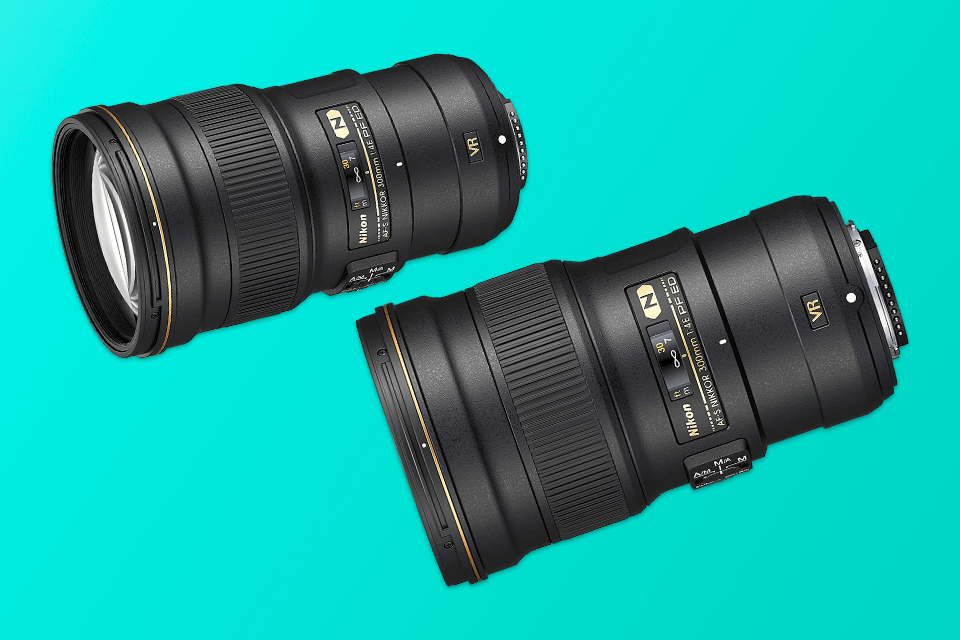
Selecting the ideal lens for your Nikon D3300 is a process that has to be taken seriously since excellent shots may be achieved with the proper tool in conjunction with your photographic ability. There are several lens types available from Nikon that you may utilize for different kinds of photography. Therefore, choose the intended use for the lens before making the ideal accessory purchase. It is also important for you to consider the pricing, as the Nikon D3300 has a wide price range. Select a model that meets your needs and won’t break the bank.
Crop Factor
The format factor of an average lens for the Nikon D3300 is 1.5x. It follows that a camera with a 50 mm lens may be used similarly to one with a 75 mm lens. To determine the ideal lens’s power, perform some calculations. The crop factor can help you determine the difference between Nikon and other camera types that are available now.
Should I Buy Zoom Lens or Choose Fixed Lens for My Nikon D3300 DSLR Camera?
Zoom lenses are popular among photographers because they provide an extensive array of sophisticated capabilities. Regardless of whether you are shooting faraway or up close, it will produce flawless results. Zoom lenses work similarly to wide-angle or telephoto lenses, so you won’t have any trouble capturing the beauty of wildlife and landscapes. Accurate photos are guaranteed by the optical stabilization technologies installed. Additionally ideal for photography in dimly light areas is this kind of lens. Naturally, using a zoom lens comes with some restrictions, so whether you choose to use conventional lenses or go with a fashionable add-on, be sure it will enhance and facilitate your shooting experience.
The Best Nikon D3300 Kit Lens
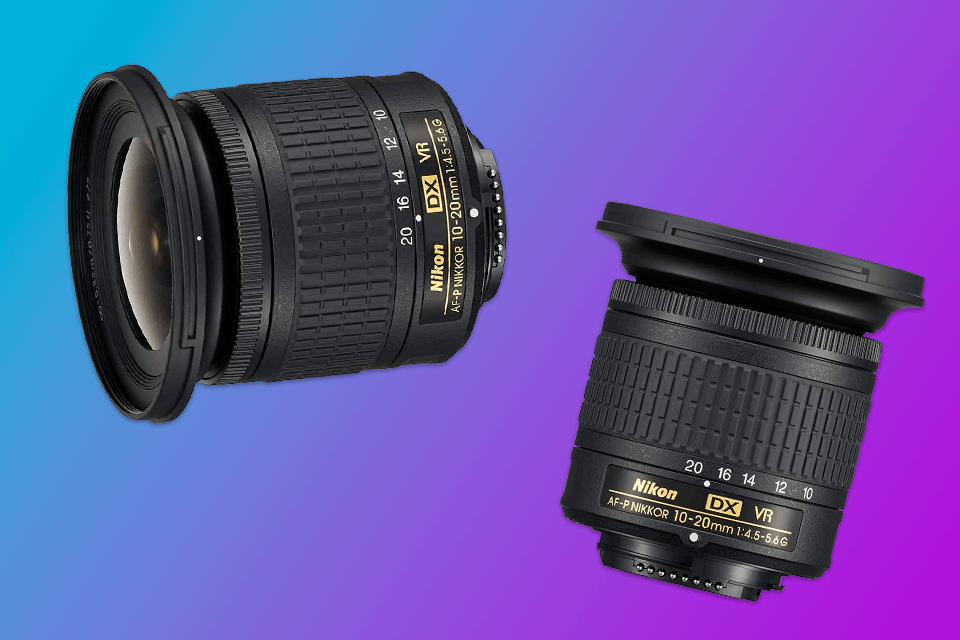
If you want to use the Nikon D3300 as your first SLR camera, go for a “kit,” which is simply a camera and lens. It will enable you to make some financial savings, as buying a camera body and an attachment separately is more costly. Although a kit lens can provide excellent shots, some photographers are not happy with the quality of the photographs they capture.
The Nikon 18-55 mm VR II is often included with the Nikon D3300, whereas the Nikon D3200 typically comes with the original 18-55 mm VR. The photos generated by these two kits don’t differ all that much. They are around the same quality. The Nikon 18-55 mm VR II is more portable and lighter than its predecessor, yet it still offers the same extensive capability.
